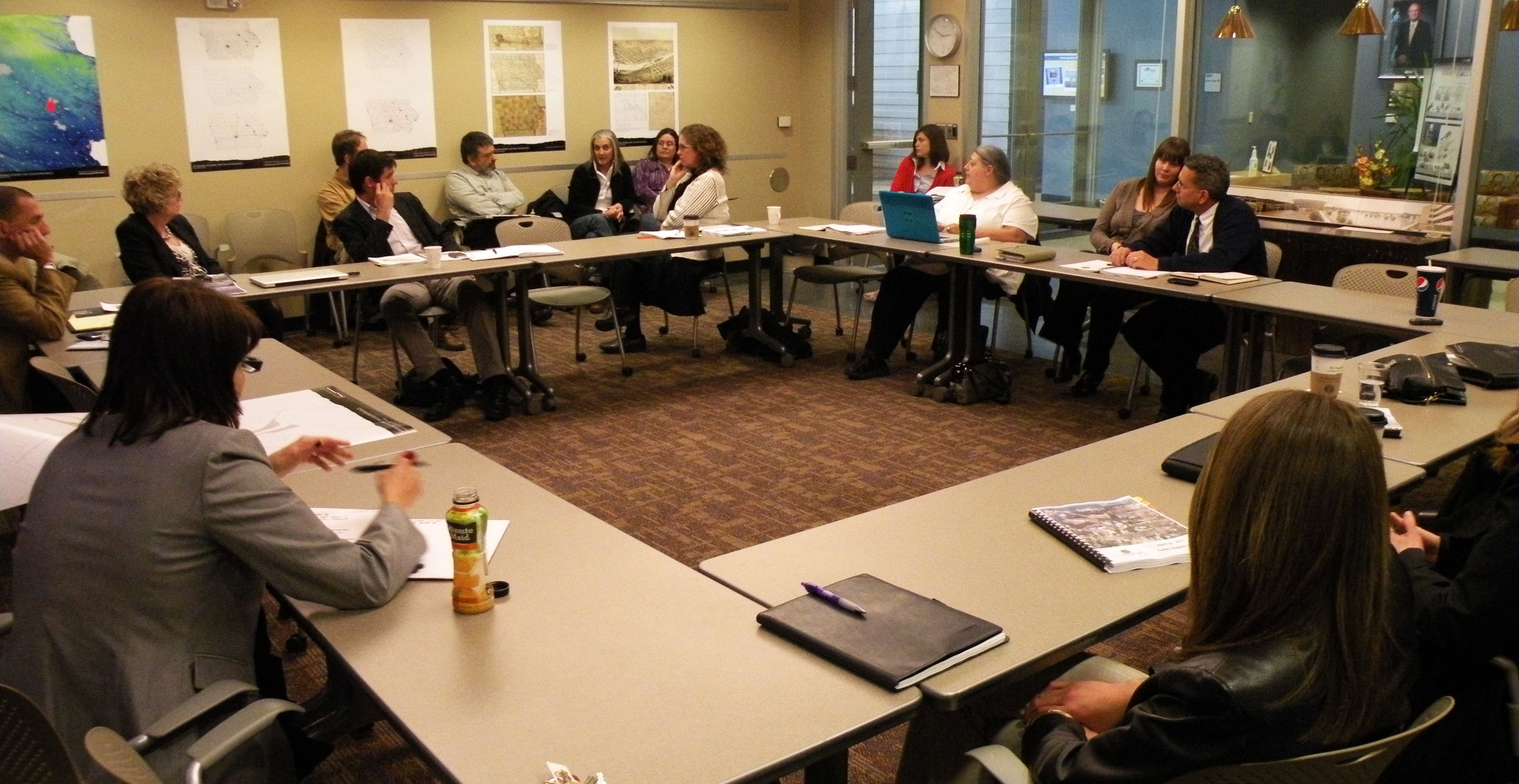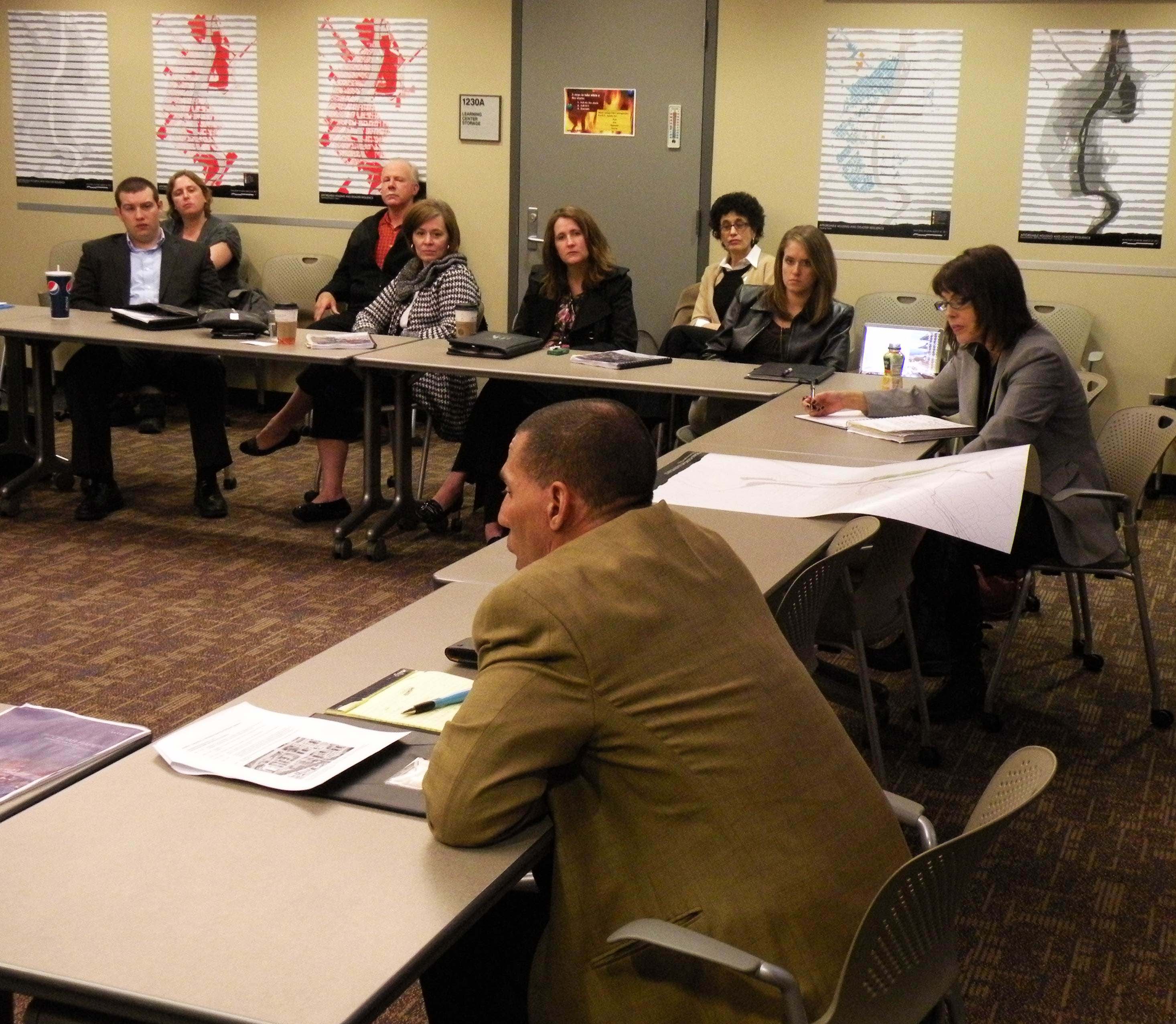Sponsored by the Association of Collegiate Schools of Architecture (ACSA), the National Endowment for the Arts (NEA), and the Iowa State University, College of Design
Project Leader: Nadia M. Anderson, Assistant Professor, Iowa State University
April 20-22, 2011 | Host School: Iowa State University

Experts in affordable housing, disaster resilience and sustainable design joined local housing and planning officials and nonprofit and for-profit housing developers for “The Symposium on Affordable Housing and Disaster Resilience,” April 21, 2011 at Iowa State University. They discussed strategies for the continuing development of sustainable neighborhoods and affordable housing in flood-affected areas of Cedar Rapids.
“I hope that this event will generate discussion about how design can be an active force in making flood-impacted communities like Cedar Rapids more sustainable and more disaster resilient on multiple levels,” said symposium organizer Nadia Anderson, ISU assistant professor of architecture and extension architecture and community design specialist. “Valuing so-called natural and human systems equally and finding ways for them to work together is a critical step in this process.”
Discussions included how the control of natural systems—such as the channeling of the Cedar River and development of its natural flood plain—have resulted in neighborhoods that continue to be vulnerable to disasters like flooding, despite structural interventions like floodwalls and levees. It also examined how environmental strategies, in concert with natural systems, can reduce this vulnerability and empower residents of affordable housing.
The symposium centered on Anderson’s case study of Cedar Rapids, where record flooding of the Cedar River in 2008 devastated a significant portion of the city’s affordable housing and associated neighborhoods. The study builds on the work of Anderson’s students, who developed energy-efficient modular housing prototypes for the Oak Hill Jackson neighborhood. Subsequent studios (led by design faculty Clare Cardinal-Pett, Peter Goché, and Ulrike Passe, architecture; and Mira Engler, landscape architecture), together with the City of Cedar Rapids’ work, also provided invaluable resources for this study. Work from these studios, as well as analytical maps prepared by Anderson and her research assistants, will be exhibited as part of the symposium.
Nationally renowned affordable housing and sustainable design experts participating in the event include Kathleen Dorgan, principal of Dorgan Architecture & Planning, Storrs, Conn.; Judith Kinnard, Harvey-Wadsworth chair and professor at the Tulane School of Architecture; David Perkes, associate professor of architecture at Mississippi State University and founding director of the Gulf Coast Community Design Studio; and Jeff Carney, research professor, College of Art and Design, Louisiana State University and director of the Coastal Sustainability Studio.

Symposium Attendees: Judy Kinnard, Tulane University, School of Architecture; Jeff Carney, Louisiana State University, Coastal Sustainability Studio; Mira Engler, ISU Landscape Architecture; Kathy Dorgan, Dorgan Architecture & Planning, Storrs, Conn.; Christian Hall, Blackhawk Construction; Ryan Galloway, Hatch Development Group; Brent Schipper, Architects Schipper Kastner; David Perkes, Mississippi State University, Gulf Coast Community Design Studio; Sarah Reilly, Community Housing Initiatives; Eric Ellis, ACSA; Caleb Mason, Housing Rehabilitation Specialist, City of Cedar Rapids Community Development; Christine Butterfield, Director, City of Cedar Rapids Community Development; Paula Mitchell, Grant Programs Manager, City of Cedar Rapids Community Development; Doug Johnston, ISU College of Design; Mark Clipsham, Architecture By Synthesis; Kimberly Zarecor, ISU Arch; Angy Jewit; Iowa Disaster Recovery; Kristin O’Brien, ISU Undergrad Research Assistant; Rachelle Partridge, ISU Graduate Research Assistant; Clare Cardinal-Pett, ISU Arch; Marwan Ghandour, ISU College of Design; Clint Twedt-Ball, Block by Block; Jamie Horwitz, ISU Arch; Lynn Paxson, ISU Arch; Dale Todd, Hatch Development Group; Tim Borich, ISU Extension; Gregory Palermo, ISU Arch; Nadia Anderson, ISU Arch


Symposium Discussions
There is an underling tension between the natural elements (waterways) and the man-made country and city grids (Jeffersonian Survey Grid).
Research Questions
- How is the social configuration of Cedar Rapids related to its physical “natural” configuration?
- Do these relationships exacerbate socio-economic inequities, particularly with respect to housing?
- How does the 2008 flood demonstrate these relationships and inequities?
- How can a system-based approach to neighborhood and affordable housing design bring the “natural” and the “human” together and help overcome inequalities?
Rebuilding & Affordable Housing
Prior to the 2008 disaster, there were no affordable housing developers in Cedar Rapids. Currently the city is working with new local developers in the transition of affordable housing and redevelopment.
Urban Design Principals
Cedar Rapids’ next phase is urban redevelopment and design guidelines for redevelopment. Who determines the design requirements for streetscapes (lights, sidewalks, etc.)? Urban Design Initiatives through Cedar Rapids with standards and guidelines for streetscape designs.
Work with developers to create a model blocks as master neighborhood plans.
Cedar Rapids is looking to work with local people, developers, builders, etc. The city will assist with training the interested local groups (developers) in affordable housing and neighborhood redevelopment.
Where is the Design? Value of Design Thinking
How do you get design experts (architects, landscape architects, planners, etc.) into the formula? Where are the designers in all of the discussion and redevelopment? Top three included participants, so far: Money, Government, Citizens. Where are the expert designers? Designers are the 4th participants that have not been fully involved. Design experts can work along with citizens, developers, and builders to create successful designs for all. Good design comes at all levels with all parties involved.
Educators and Students working in Community Development
How do you operate with low-income affordable housing? Students need to think and see the reward, design and satisfaction in working in the affordable housing field. Educators need to train students to work with community leaders, neighborhood citizens, and government officials.
Kendall Nicholson
Director of Research + Information
202-785-2324
knicholson@acsa-arch.org

 Study Architecture
Study Architecture  ProPEL
ProPEL 